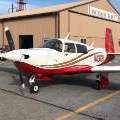Switching Tanks on the Ground?
-
Members Online
- DXB
- TNdebdriver
- redbaron1982
- T. Peterson
- jetdriven
- spistora
- MikeOH
- 47U
- Bartman
- TCC
- MB65E
- toto
- Parker_Woodruff
- LANCECASPER
- Ron McBride
- Austintatious
- Grant_Waite
- crustymuffin
- bigmo
- donkaye
- Fredo0709
- Rotorhead
- sdmideas
- OR75
- cbarry
- PT20J
- Jrags
- GDGR
- Guy123
- Crawfish
- BillyT0020
- Tito22
- mooneyflyfast
- McMooney
- Schinderhannes


Recommended Posts
Join the conversation
You can post now and register later. If you have an account, sign in now to post with your account.